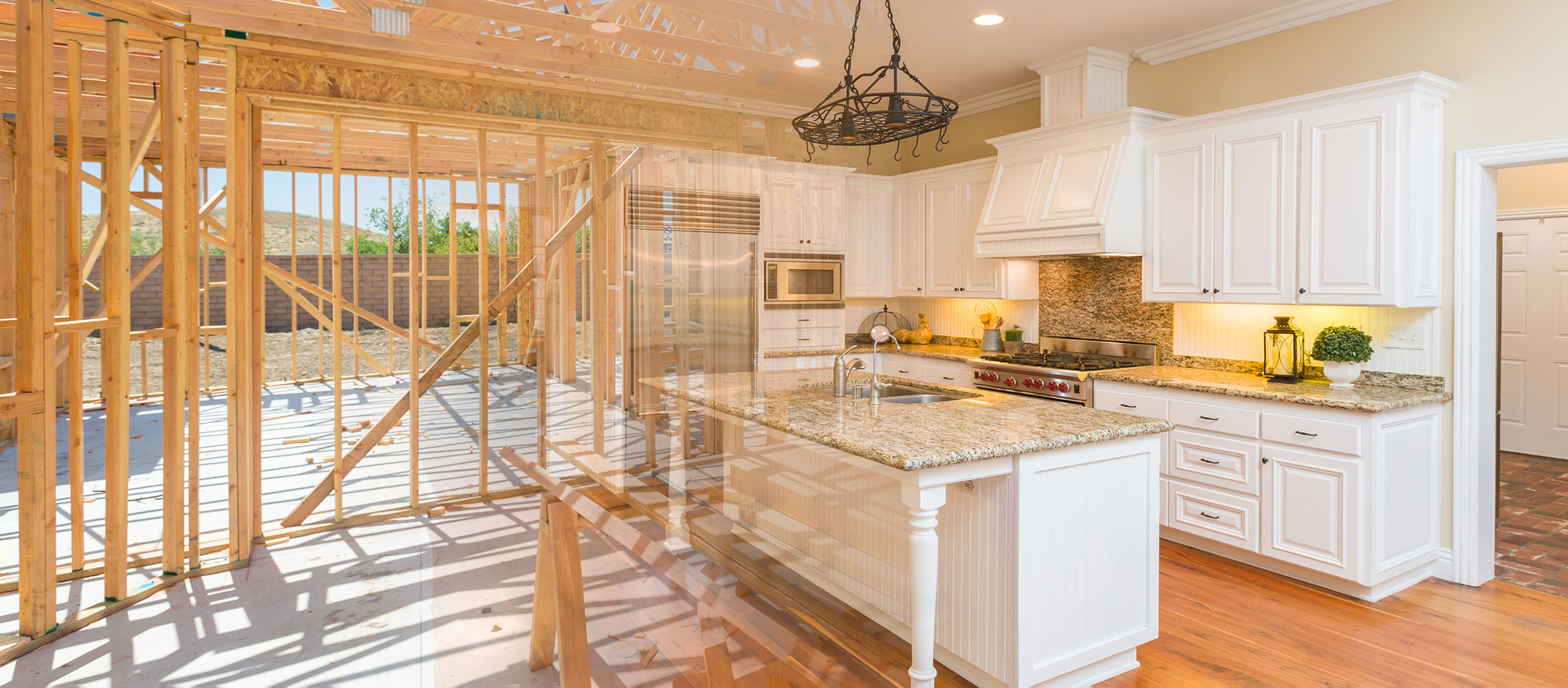Top Ways to Pay for a Home Remodel
Reading time: 5 Minutes
August 6th, 2021
There's nothing quite as satisfying as renovating your home. Not only does a renovation project increase your enjoyment of your place, it can also increase its value. Of course, picking out new tile and countertops is the fun part. Figuring out how to pay for home renovations can be more challenging.
The bottom line is, home renovations aren't cheap. The average bathroom remodel cost more than $13,000 last year, while a kitchen remodel cost around $35,000. Even a smaller project such as installing a new lanai can cost more than $3,000. That means many families will need to figure out a plan for financing their home improvements.
Credit cards and unsecured personal loans are often not the best option because of their high interest rates. Fortunately, you can often access cash at much lower interest rates by tapping into the home equity you already have with loans or lines of credit secured by your home.
Here are a few smart ways to pay for your remodel—and get a step closer to the chef's kitchen or spa-like bathroom of your dreams.
Apply for a HELOC
Another great option to pay for home improvements is a home equity line of credit, or HELOC. With a HELOC, you can take out money when you need it, and then pay it back as you go. It works like a credit card, but often with much lower interest rates, since it's secured by your home. You only pay interest on the money you take out, not on your total credit limit, making a HELOC a great option for renovations that might take a long time to complete.
As with a credit card, your lender will set a limit on how much you can borrow at one time. But because the funds are revolving, you can withdraw money, pay it back, and then withdraw some more. This can make a HELOC a flexible tool to access funds for when you have a variety of projects or don't know exactly how much your home improvements will cost.
HELOCs typically have a variable interest rate, with a low introductory rate to get you started. However, as you wrap up your home renovation project, you may want to convert some or all of the balance on your adjustable-rate HELOC to a fixed-rate loan option (FRLO). This ensures your interest rate won't change for a specified term and protects you from rising interest rates, so you can budget out your repayment schedule without worry.
You can also refinance your mortgage with a HELOC if you owe less than $400,000, often without an appraisal and virtually no closing costs. This will allow you access to a larger line of credit for bigger renovation projects. Additionally, unlike many lenders, Bank of Hawaii HELOCs don't feature balloon payments.
Get a Home Equity Loan
A third option for paying for home renovations is a home equity loan. Unlike a HELOC, which is a line of credit you can tap into as needed, you'll receive a home equity loan as a lump sum, up front, and then pay it back with regular monthly payments over a set period of time. This makes a home equity loan a good option if you know exactly how much you'll need for your home renovations. Having regular monthly payments can make it easier for you to budget and manage your costs. These home improvement loans also usually have a fixed interest rate, which means the amount you pay should stay the same from month to month.
Refinance Your Mortgage
One way to access cash for a home improvement project is to refinance your mortgage. This can help you pay for home renovations in a couple of ways. With a cash-out refinance, you can use your home's equity to qualify for a new mortgage that's larger than your current mortgage. You can then use the remaining cash to pay for your new remodel.
In order to take cash out by refinancing your mortgage, you'll need to have a certain amount of equity built up in your home. This makes refinancing a good option for people who have owned their home and have been paying off their mortgage for a number of years.
If mortgage interest rates have dropped since you originally took out your mortgage, another option is to refinance with what's called a rate-and-term refinance. A lower interest rate or a longer repayment term could lower your monthly mortgage payments, freeing up cash each month to pay for your renovation.
When deciding on whether refinancing your mortgage makes sense for your situation, keep in mind that either kind of refinance will involve additional closing costs, usually between 3 percent and 5 percent of the total refinanced amount.
If you don't have extra cash sitting around, getting a home renovation loan can be the best way to pay for home improvements. However, since there are so many lending options secured by your home, it can be hard to choose what's right for you. If you need help, Bank of Hawaii can make your renovation project both simple and cost-effective. Book time with one of our local lending experts who can help you reach your goals and take the next step in your remodeling journey.
You're about to exit BOH.com
Links to other sites are provided as a service to you by Bank of Hawaii. These other sites are neither owned nor maintained by Bank of Hawaii. Bank of Hawaii shall not be responsible for the content and/or accuracy of any information contained in these other sites or for the personal or credit card information you provide to these sites.
